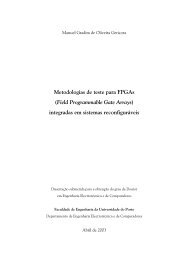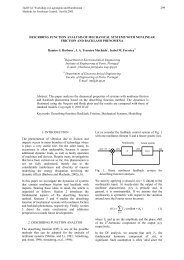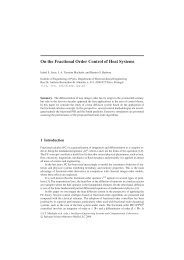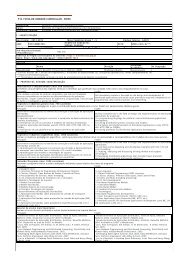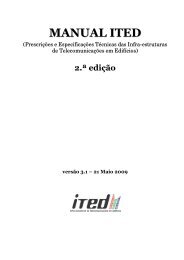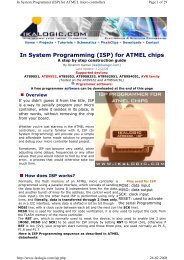AUTOMOTIVE ELECTRICAL CIRCUITS AND WIRING
AUTOMOTIVE ELECTRICAL CIRCUITS AND WIRING
AUTOMOTIVE ELECTRICAL CIRCUITS AND WIRING
You also want an ePaper? Increase the reach of your titles
YUMPU automatically turns print PDFs into web optimized ePapers that Google loves.
Checking the condition of the battery by testing the state of charge.<br />
VISUAL INSPECTION OF THE BATTERY.- Battery maintenance should always<br />
begin with a thorough visual inspection. Look for signs of corrosion on or around the<br />
battery, signs of leakage, a cracked case or top, missing caps, and loose or missing<br />
hold-down clamps.<br />
CHECKING ELECTROLYTE LEVEL <strong>AND</strong> ADDING WATER.- On vent cap<br />
batteries, the electrolyte level can be checked by removing the caps. Some batteries<br />
have a fill ring which indicates the electrolyte level. The electrolyte should be even<br />
with the fill ring. If there is no fill ring, the electrolyte should be high enough to cover<br />
the tops of the plates. Some batteries have an electrolyte-level indicator (Delco Eye).<br />
This gives a color code visual indication of the electrolyte level, with black indicating<br />
that the level is okay and white meaning a low level.<br />
If the electrolyte level in the battery is low, fill the cells to the correct level with<br />
DISTILLED WATER (purified water). Distilled water should be used because it does<br />
not contain the impurities found in tap water. Tap water contains many chemicals that<br />
reduce battery life. The chemicals contaminate the electrolyte and collect in the bottom<br />
of the battery case. If enough contaminates collect in the bottom of the case, the cell<br />
plates SHORT OUT, ruining the battery.<br />
If water must be added at frequent intervals, the charging system may be overcharging<br />
the battery. A faulty charging system can force excessive current into the battery.<br />
Battery gassing can then remove water from the battery.<br />
Maintenance-free batteries do NOT need periodic electrolyte service under normal<br />
conditions. It is designed to operate for long periods without loss of electrolyte.<br />
CLEANING THE BATTERY <strong>AND</strong> TERMINALS.<br />
If the top of the battery is dirty, using a stiff bristle brush, wash it down with a<br />
mixture of baking soda and water. This action will neutralize and remove the acid-dirt<br />
mixture. Be careful not to allow cleaning solution to enter the battery.<br />
To clean the terminals, remove the cables and inspect the terminal posts to see if they<br />
are deformed or broken. Clean the terminal posts and the inside surfaces of the cable<br />
clamps with a cleaning tool before replacing them on the terminal posts.<br />
CAUTION<br />
Do NOT use a scraper or knife to clean battery terminals. This action removes too<br />
much metal and can ruin the terminal connection.<br />
When reinstalling the cables, coat the terminals with petroleum or white grease. This<br />
will keep acid fumes off the connections and keep them from corroding again. Tighten<br />
<strong>AUTOMOTIVE</strong> <strong>ELECTRICAL</strong> <strong>CIRCUITS</strong> <strong>AND</strong> <strong>WIRING</strong> 14/ 101



